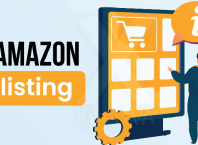If you are a creative entrepreneur or your business is in the creative industry, you need to protect your intellectual property.
You want to make sure that your creations are legally protected. As you seek to protect your intellectual property, you will come across the terms “copyright and trademark” and feel confused.
We’ve prepared this guide to help you understand these two terms to decide what you need for your or your company’s original works.
Contents
The Only Guide You’ll Need on Copyright and Trademark
Before you protect your original works, seek professional legal counsel. We suggest trying to find a local attorney to help you before you proceed with intellectual property protection.
Now, here’s
What you need to know about copyright and trademark
1What Is a Copyright?
The idea behind copyright is in the US Constitution.
Copyright law consists of a few basic tenets:
Firstly, there are Rights. That means that the copyright owner has the exclusive rights to sell, republish, distribute, and perform the original work.
For a work to have copyright protection, it must be an original work. To protect an original work, all the author(s) have to do is put a copyright statement within the work – such as a page stating “Copyright [YEAR] [AUTHOR(S) NAMES]” in a book.
However, it is often advisable to get the original work protected by the U.S. Copyright Office to have the legal backing of the government in case there is an issue in the future surrounding copyright infringement.
For a work to be copyrighted, it must be a tangible medium (including a digital work). For example, you cannot copyright an idea.
As of the publication of this article, copyright protection currently exists for the duration of the author’s life plus 70 years. After this duration, the work becomes part of the Public Domain. That means anyone can access, use, distribute, and sell the original work.
2What Is a Trademark?
Trademark is another legal protection that was devised by Congress in 1946. Trademark was established to distinguish one brand or model from others. It was created for companies to distinguish their unique name or product type from potential competition.
To protect the interests of a consumer, only a trademark holder can use their trademark. For example, every vacuum cleaner company cannot use ‘Hoover’ to promote the features or capability of their vacuums. Only the Hoover brand can do this.
Trademarks are registered through the U.S. Patent and Trademark Office. That is the only way to trademark your name.
If you have created a particular product with particular features and you want to distinguish it from your competition, you might want to consider a trademark. If you want to protect your company’s name from being used by others, you want to consider a trademark.
3What If I Don’t Protect My Work or Brand?
What happens if you don’t protect your work under the copyright or your brand under the trademark?
There are several possibilities. If your company’s unique name or creations’ names aren’t trademarked, then you leave the door open for others to use it. For example, author J.K. Rowling registered a trademark for the character and name ‘Harry Potter.’ That means that she has the sole authority to create original works with this character.
Anyone else who wishes to use the Harry Potter character in their original work would have to seek permission from J.K. Rowling first – or face possible legal ramifications.
If you don’t copyright your original work, it means that others can republish it, distribute it, alter or build upon it, and profit off it. If you write a novel and don’t copyright it, you open the door for another author to republish it and sell it – without having to owe you any royalties.
You leave the possibility for a filmmaker to adapt the novel into a film – without owing you royalties or even giving you credit.
It’s imperative to understand that all jurisdictions do not internationally recognize both Copyright and Trademarks. Different jurisdictions have agreements, but many don’t.
For example, a novel copyrighted in the U.S. cannot be infringed upon by anyone in the U.K. as there is a copyright agreement.
But Iran doesn’t have a copyright agreement with the U.S., meaning that an Iranian can take your original work for their own use – as was the case with J.D. Salinger.
You need to speak to your attorney to ensure that your work has the maximum protection it can get. You should also ask your attorney about extending copyright after your death so that your work doesn’t fall into Public Domain.
4Alternative Protections
While copyright and trademark are the most recognized protections, there are others you should be aware of. As always, you want to seek your attorney’s advice on what is the best route for your creations.
The most notable alternative protection is a Creative Commons license. This license grants anyone the permission to distribute the work. The basic protection is that anyone can distribute the work as long as the original author(s) are explicitly granted credit.
Some Creative Commons licenses will restrict commercial use of the creation while others will allow it. Some Creative Commons licenses will grant permission to alter or build upon the original work while others will restrict it.
With this license, the creator(s) of the original work can decide what license suits them best. This is for any tangible medium. It has particularly found success among digital creations.
When using a Creative Commons License, you make it easier for others to share your original work. You drop the need to receive compensation for it. This was borne out of the desire for artists to distribute their work without having profit as their main priority.
Protect Your Work
Now you know the differences between copyright and trademark and alternative protections. You can decide what’s best for your original works and your company. Always consult with your attorney, however, before making this important decision.
Be sure to read great reviews of products and services on our website.












